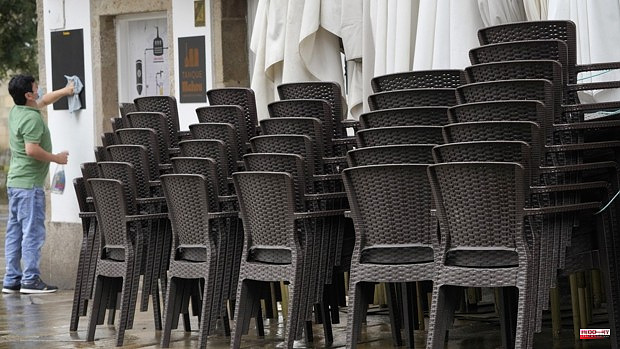The fleeting rise in costs, both labor and raw materials, has caught thousands of businesses unable to absorb the increase in expenses, which has led many of them to have to reduce their profit margins to maintain activity in full escalation of inflation. Specifically, in the first quarter of this 2022 these global costs have increased by 23%, while in the same period the recovery has allowed sales to rise by 19%, four points less, which puts even greater pressure on the balance sheets of small and medium-sized companies in our country.
This follows from the latest 'Indicator on the Situation of SMEs', published this Monday by the Spanish Confederation of Small and Medium Enterprises (Cepyme) where it is noted how the increase in costs is causing thousands of businesses to lose the ability to compete .
According to the conclusions of the study, after the pandemic, the Spanish company shows signs of having fallen behind in the recovery. Although there is more activity, it is much less profitable. This situation is further aggravated at the beginning of 2022 due to the inflationary crisis. "In conclusion, SMEs are being dragged down by the high costs that employers have to face, a significant loss of productivity and, in general, by lower profitability," they point out from the organization.
This narrowing of the profit margins of the companies by reporting a greater increase in costs than in sales is also accompanied by an increase in the internal costs of the companies. Thus, total labor costs in SMEs grew by 5.1% in 2021 (eliminating the effect of ERTEs).
During the first quarter of 2022, this trend worsened, with labor costs increasing by 5.7% on average. In addition, the small ones are the ones that suffered a greater increase with a rise of 6.3% compared to 4.1% of the medium ones. "It should be noted that social security contributions have also risen exponentially in recent years," the authors of the report stress.
In addition, the SMEs that participated in the preparation of this indicator also show difficulties in coping with their businesses due to the rise in wages, which in the case of the minimum interprofessional wage (SMI) has risen from 655.2 euros in 2016 to 1,000 euros in 2022. Many SMEs maintain that this increase in salaries is being carried out at the cost of reducing margins.
The cocktail is explosive, the costs are increasing on all sides of the business activity, and that many of these SMEs are still subject to publicly guaranteed financing planned in recent years through ICO credits, which must be returned once the moratorium granted both for those who agreed due to Covid and for those who have done so more recently for reasons associated with the war in Ukraine ends.
This situation has led to the profitability of SMEs, which had begun to recover in 2013, slowing down their growth due to the pandemic. Thus, in the first quarter of 2022 it fell to 3%, with the eighth year-on-year decrease in net return on assets. The indicator shows that profitability has returned to 2016 levels.
Spanish SMEs thus find themselves with a worsening of liquidity and a decrease in the competitiveness of the company, as pointed out by Cepyme. Small and medium-sized companies are also beginning to notice greater difficulties in accessing credit and predict weakness in their businesses in the face of a future rate hike by the European Central Bank (ECB). To this is added, according to the data of the indicator, that in 2021 the liabilities of SMEs on their net worth grew 10 percentage points, to 96%.
Cepyme denounces in this way that the Spanish business fabric "is undercapitalized and in worse conditions" than European SMEs to face the economic slowdown. The Confederation points out that national SMEs have less aid, of lesser amounts and with more bureaucracy than small and medium-sized companies in other countries of the European Union.
This places them as "the most vulnerable of the large euro economies," according to Cepyme, citing surveys by the European Central Bank (ECB). To solve this situation, Cepyme demands urgent actions in tax, regulatory and credit matters, especially in an economic context like the current one, with inflation on the rise. In addition, they ask the Government for policies that promote productivity and competitiveness in companies.
All in all, the 2021 Indicator stood at 5.4 points out of 10, the same level that the Spanish business fabric had eight years ago. With these data, Cepyme concludes that the Spanish SME has been "off the hook" after the pandemic, since its activity is less profitable.







